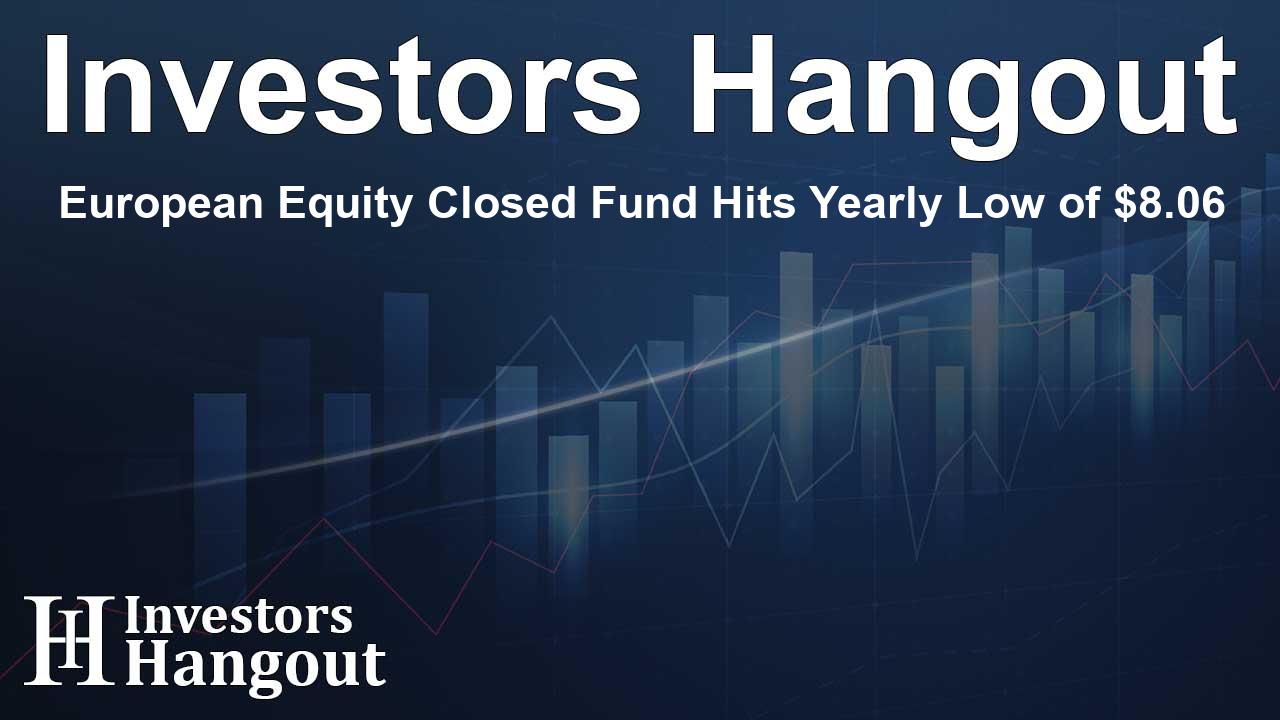European Equity Closed Fund Hits Yearly Low of $8.06

European Equity Closed Fund Faces Market Pressures
In recent times, the European Equity Closed Fund (EEA) has encountered significant challenges in the market. The stock price has plummeted to $8.06, marking a new 52-week low that has sparked discussions among investors. Such a decline serves as a reminder of the volatility present in today's economic landscape.
A Closer Look at the Current Market Environment
The current market environment remains turbulent, influencing not just EEA but many funds across sectors. Economic fluctuations have led investors to exercise caution, making it essential to analyze the underlying factors contributing to this certain stock's performance.
Dividend Yield and Performance History
Despite the challenges, EEA still showcases a solid dividend yield of 3.49%. This yield is particularly appealing for income-focused investors looking for revenue amidst market instability. This fund has a commendable record of sustaining dividend payments for 11 consecutive years, which is a reassuring factor during uncertain times.
Valuation Metrics and Revenue Growth
At a P/E ratio of 9.59, EEA is perceived as an attractive investment option by some analysts. Additionally, the fund has demonstrated impressive revenue growth of 20.02% over the last twelve months, showcasing its ability to thrive even in tough conditions. This growth metric suggests that, despite current stock price challenges, the fundamentals of the fund remain strong.
Investor Sentiment and Future Outlook
As EEA touches its 52-week low, it becomes imperative to understand investor sentiment surrounding the fund. While current market conditions are less than ideal, the stock's low price may entice value investors seeking opportunities for growth. The broader market trends will heavily influence how EEA's performance rebounds in the upcoming months.
Frequently Asked Questions
What does a 52-week low indicate for a stock?
A 52-week low signifies the lowest price at which a stock has traded over the past year, serving as a critical benchmark for assessing performance and potential recovery.
How can investors assess the dividend yield?
Investors assess dividend yield by dividing the annual dividend payment by the stock price, helping to gauge the income return on an investment.
Why is P/E ratio important for investors?
The P/E ratio offers insights into a company's valuation, comparing its current share price to its earnings per share. A low P/E may indicate a potentially undervalued stock.
What factors can influence a stock's price?
Several factors, including market conditions, economic indicators, and company performance, can influence a stock's price fluctuations, impacting investor sentiment.
How has EEA's revenue growth affected its stock performance?
EEA's revenue growth of 20.02% suggests strong fundamental performance, which can, in the long run, positively impact its stock price as investor confidence builds.
About Investors Hangout
Investors Hangout is a leading online stock forum for financial discussion and learning, offering a wide range of free tools and resources. It draws in traders of all levels, who exchange market knowledge, investigate trading tactics, and keep an eye on industry developments in real time. Featuring financial articles, stock message boards, quotes, charts, company profiles, and live news updates. Through cooperative learning and a wealth of informational resources, it helps users from novices creating their first portfolios to experts honing their techniques. Join Investors Hangout today: https://investorshangout.com/
Disclaimer: The content of this article is solely for general informational purposes only; it does not represent legal, financial, or investment advice. Investors Hangout does not offer financial advice; the author is not a licensed financial advisor. Consult a qualified advisor before making any financial or investment decisions based on this article. The author's interpretation of publicly available data shapes the opinions presented here; as a result, they should not be taken as advice to purchase, sell, or hold any securities mentioned or any other investments. The author does not guarantee the accuracy, completeness, or timeliness of any material, providing it "as is." Information and market conditions may change; past performance is not indicative of future outcomes. If any of the material offered here is inaccurate, please contact us for corrections.